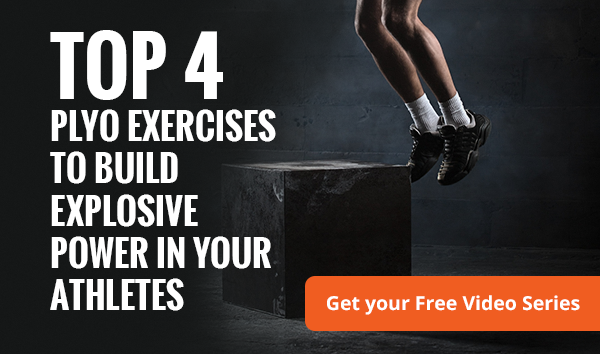Why You Should be Implementing Plyometrics: Part 1
 Before we get into why you should be implementing plyometrics into your training programs, let’s first define plyometrics.
Before we get into why you should be implementing plyometrics into your training programs, let’s first define plyometrics.
The Merriam-Webster dictionary defines plyometrics as an exercise involving repeated, rapid stretching and contracting of muscles (by jumping and rebounding) to increase muscle power.
Pro Tip: Plyometric exercises are a great tool to use to put power behind the muscle.
Plyometrics can be used with many athletes or non-athletes at varying levels. However, as a wrestling coach, it’s a tool I use to help and even simulate explosive drive through their opponents while on the mat.
In Part 1 of this blog, you will receive 3 reasons why you should be implementing plyometrics in your training programs and Free Access to the Top 4 Plyo Exercises.
3 Reasons to Implement Plyometrics
Reason #1: Putting the Power Behind Muscles
One of the main reasons to implement plyometric exercises into a training program is to give athletes the power they need to throw faster, jump higher, or hit the ball harder and farther.
For example, plyometric exercises give wrestlers the power they need to drive through their double leg take downs, a basketball athlete the powerful vertical for a rebound, a swimmer the ability to “push” off the block and the list goes on.
Pro Tip: Application of power is a key component in successful athletes. What’s the point if your athlete is lifting a ton of weight and they can’t apply it?
Reason #2: Progressions
Plyometrics can be a great tool for progressions. Do you have an athlete or athletes who have mastered a certain exercise, or have reached a glass ceiling with a certain exercise, but you’re not sure how you can progress those athletes?
Give plyometrics a try! A good example is a basic body weight squat progressing into squat jumps. Great push-ups need a challenge? Challenge them with plyometric push-ups (one of my personal favorites).
Pro Tip: Progressions are very important in developing an athlete’s long-term capabilities. Be sure that athletes are proficient in all mechanics before moving them on to more complex moves and adding plyometrics.
Reason #3: Performance Development
Through regular and adequate use of plyometric exercises your athletes will be able to jump higher or farther (depending on their reasoning for jumping), run faster and longer (plyometrics has been shown to improve distance runner’s conditioning), throw harder, and at the end of the day develop the necessary tools to reach their goals!
There are many reasons to add plyometrics to your training, and in my next blog, I will expose 3 more. For now, it is important to remember that plyometrics are a tool, and should be used within your existing long-term athlete development programming.
About the Author: DeCoreus Leavell
 DeCoreus Leavell
DeCoreus Leavell
– IYCA High School Strength and Conditioning Specialist Certified
– Assistant Coach at Christian County High School
– In the span of 3 years coached 3 state champions and 15 state placers at the middle and high school level
Top 4 Plyo Exercises
Every successful athlete needs the ability to exert a maximal amount of force in the shortest possible time interval (i.e. power). In Coach Wil Fleming’s short 4-video series, he outlines how plyo exercises improve a variety of movement patterns that increase strength, speed, power and much more.


